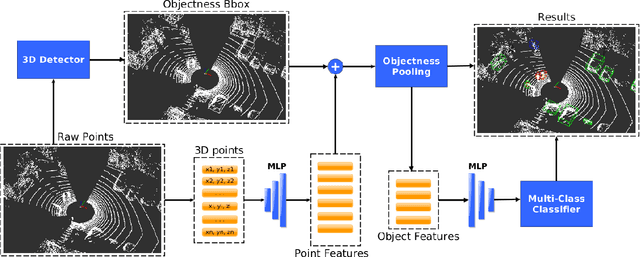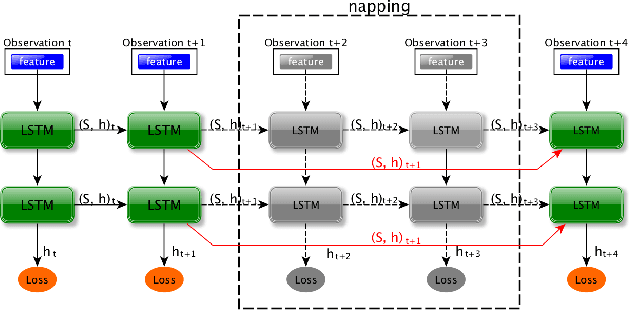Anestis Zaganidis
Edge-SD-SR: Low Latency and Parameter Efficient On-device Super-Resolution with Stable Diffusion via Bidirectional Conditioning
Dec 09, 2024



Abstract:There has been immense progress recently in the visual quality of Stable Diffusion-based Super Resolution (SD-SR). However, deploying large diffusion models on computationally restricted devices such as mobile phones remains impractical due to the large model size and high latency. This is compounded for SR as it often operates at high res (e.g. 4Kx3K). In this work, we introduce Edge-SD-SR, the first parameter efficient and low latency diffusion model for image super-resolution. Edge-SD-SR consists of ~169M parameters, including UNet, encoder and decoder, and has a complexity of only ~142 GFLOPs. To maintain a high visual quality on such low compute budget, we introduce a number of training strategies: (i) A novel conditioning mechanism on the low resolution input, coined bidirectional conditioning, which tailors the SD model for the SR task. (ii) Joint training of the UNet and encoder, while decoupling the encodings of the HR and LR images and using a dedicated schedule. (iii) Finetuning the decoder using the UNet's output to directly tailor the decoder to the latents obtained at inference time. Edge-SD-SR runs efficiently on device, e.g. it can upscale a 128x128 patch to 512x512 in 38 msec while running on a Samsung S24 DSP, and of a 512x512 to 2048x2048 (requiring 25 model evaluations) in just ~1.1 sec. Furthermore, we show that Edge-SD-SR matches or even outperforms state-of-the-art SR approaches on the most established SR benchmarks.
Discriminative Fine-tuning of LVLMs
Dec 05, 2024



Abstract:Contrastively-trained Vision-Language Models (VLMs) like CLIP have become the de facto approach for discriminative vision-language representation learning. However, these models have limited language understanding, often exhibiting a "bag of words" behavior. At the same time, Large Vision-Language Models (LVLMs), which combine vision encoders with LLMs, have been shown capable of detailed vision-language reasoning, yet their autoregressive nature renders them less suitable for discriminative tasks. In this work, we propose to combine "the best of both worlds": a new training approach for discriminative fine-tuning of LVLMs that results in strong discriminative and compositional capabilities. Essentially, our approach converts a generative LVLM into a discriminative one, unlocking its capability for powerful image-text discrimination combined with enhanced language understanding. Our contributions include: (1) A carefully designed training/optimization framework that utilizes image-text pairs of variable length and granularity for training the model with both contrastive and next-token prediction losses. This is accompanied by ablation studies that justify the necessity of our framework's components. (2) A parameter-efficient adaptation method using a combination of soft prompting and LoRA adapters. (3) Significant improvements over state-of-the-art CLIP-like models of similar size, including standard image-text retrieval benchmarks and notable gains in compositionality.
Semi-supervised Facial Action Unit Intensity Estimation with Contrastive Learning
Nov 04, 2020



Abstract:This paper tackles the challenging problem of estimating the intensity of Facial Action Units with few labeled images. Contrary to previous works, our method does not require to manually select key frames, and produces state-of-the-art results with as little as $2\%$ of annotated frames, which are \textit{randomly chosen}. To this end, we propose a semi-supervised learning approach where a spatio-temporal model combining a feature extractor and a temporal module are learned in two stages. The first stage uses datasets of unlabeled videos to learn a strong spatio-temporal representation of facial behavior dynamics based on contrastive learning. To our knowledge we are the first to build upon this framework for modeling facial behavior in an unsupervised manner. The second stage uses another dataset of randomly chosen labeled frames to train a regressor on top of our spatio-temporal model for estimating the AU intensity. We show that although backpropagation through time is applied only with respect to the output of the network for extremely sparse and randomly chosen labeled frames, our model can be effectively trained to estimate AU intensity accurately, thanks to the unsupervised pre-training of the first stage. We experimentally validate that our method outperforms existing methods when working with as little as $2\%$ of randomly chosen data for both DISFA and BP4D datasets, without a careful choice of labeled frames, a time-consuming task still required in previous approaches.
Recurrent-OctoMap: Learning State-based Map Refinement for Long-Term Semantic Mapping with 3D-Lidar Data
Jul 29, 2018



Abstract:This paper presents a novel semantic mapping approach, Recurrent-OctoMap, learned from long-term 3D Lidar data. Most existing semantic mapping approaches focus on improving semantic understanding of single frames, rather than 3D refinement of semantic maps (i.e. fusing semantic observations). The most widely-used approach for 3D semantic map refinement is a Bayesian update, which fuses the consecutive predictive probabilities following a Markov-Chain model. Instead, we propose a learning approach to fuse the semantic features, rather than simply fusing predictions from a classifier. In our approach, we represent and maintain our 3D map as an OctoMap, and model each cell as a recurrent neural network (RNN), to obtain a Recurrent-OctoMap. In this case, the semantic mapping process can be formulated as a sequence-to-sequence encoding-decoding problem. Moreover, in order to extend the duration of observations in our Recurrent-OctoMap, we developed a robust 3D localization and mapping system for successively mapping a dynamic environment using more than two weeks of data, and the system can be trained and deployed with arbitrary memory length. We validate our approach on the ETH long-term 3D Lidar dataset [1]. The experimental results show that our proposed approach outperforms the conventional "Bayesian update" approach.
 Add to Chrome
Add to Chrome Add to Firefox
Add to Firefox Add to Edge
Add to Edge